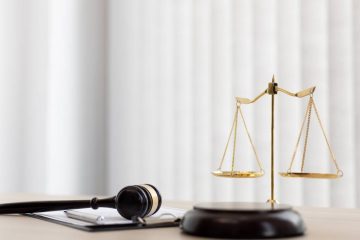Each year, a select group of lawyers undertake a handful of Supreme Court cases. These elite lawyers have established relationships with each justice on the bench and regularly socialize with them.
Most have worked as clerks to former or current Supreme Court justices, with 25 serving in top positions at the U.S. solicitor general’s office representing federal interests before that court.
Number of Justices
As it can often be challenging to secure four votes on the Supreme Court for any given case, having an ability to connect with its justices is of the utmost importance. Over the past fifteen years, some attorneys and firms have proven adept at convincing these justices to hear their client appeals.
Repeat performers tend to have deep connections to the justices: many have worked at either the U.S. Solicitor General’s Office or as law clerks; they may even hail from Ivy League schools.
Cases where one side has an advantage or clear path to victory tend to fall under their purview; such cases typically include those where WilmerHale, Hogan Lovells and their lawyers with at least 50 percent “vote-for share” are organized alphabetically; some justices seem biased toward one lawyer more than the others but most provide equitable support. The graph below displays attorneys who received 50 percent or greater votes from justices as determined by their firms; WilmerHale was the clear leader with 223 justice votes while Hogan Lovells had 220 justice votes from justices while alphabetically listed alphabetically for all other lawyers listed alphabetically alphabetically by alphabetical listing alphabetically for all lawyers listed alphabetically by alphabetical listing alphabetically for whom justices gave balanced support from justices from various justices across parties polarized support from justices towards all lawyers or vice versa depending upon individual firms or lawyers that were given balanced support from justices throughout proceedings if necessary from most justices across courts across.
Number of Lawyers
About one third of the public section seats in a courtroom are allocated for school groups, guests of lawyers arguing cases that day (who get one seat per case), justices’ spouses and VIP guests (such as Ivanka Trump with her daughter attending an argument this fall), law clerks, spouses of justices ( such as Ivanka Trump) as well as justices’ law clerks. The remaining 182 seats can be used by members of the public including Supreme Court reporters.
Lawyers who regularly appear before the courts can command high hourly rates; but smaller groups of attorneys offer another distinct advantage: an aptitude for connecting with justices during oral arguments – the final stage of cases when lawyers try to influence how judges vote through direct interaction. A Reuters analysis indicates that eight male lawyers, all working either in the U.S. Solicitor General’s office or as law clerks for individual justices accounted for 20% of oral arguments during last term alone!
Number of Seats
One side of the courtroom is designated for public access, featuring 78 seats arranged perpendicularly to the bench. Behind this are 186 reserved for school groups, guests of lawyers arguing (who get one seat each, unless their argument is divided and then they get six), and lawyers in the bar line.
These attorneys were given an order from the justices to attend more oral arguments, and this graph highlights them. Each bar shows how often justices voted for or against their positions – the three most successful being Department of Justice litigators Michael Dreeben, Malcolm Stewart and Edwin Kneedler.
Just a handful of lawyers regularly appear before the Supreme Court. Most have served as law clerks to one or more justices on the Court; Neil Gorsuch, Ketanji Brown Jackson, Elena Kagan, Samuel Alito and Brett Kavanaugh among them are just a few who received their Juris Doctorate from an Ivy League law school.
Number of Arguments
As the Supreme Court only hears a fraction of petitioned cases each year, only a select few attorneys ever get to present arguments before it. As a result, some advocates have become known for their ability to argue multiple cases at this level of law.
Justices have come to recognize the value of elite lawyers, often commending them on how well they interact with justices and their ability to help them navigate complex legal matters. Justices also appreciate being able to rely on these lawyers when facing challenging cases and issues.
Malcolm Stewart of the Office of Solicitor General has made 20 appearances before arguing cases before the U.S. Supreme Court, with 18 appearances under former Trump solicitor general Noel Francisco’s watch. Many other frequent litigating attorneys include current or former law clerks of a Supreme Court justice – these intimate connections play a pivotal role in prolonging arguments that can last far longer than anticipated.

